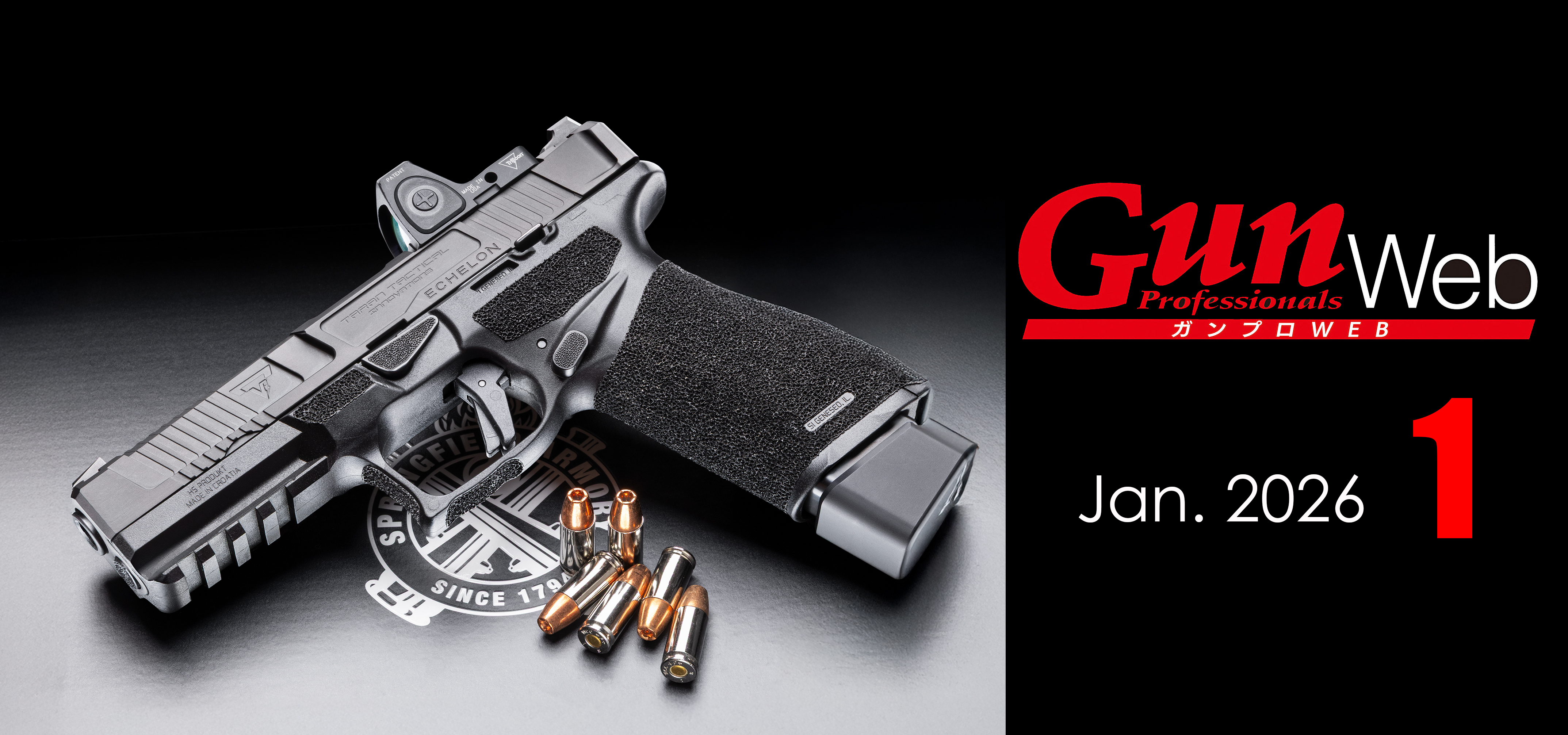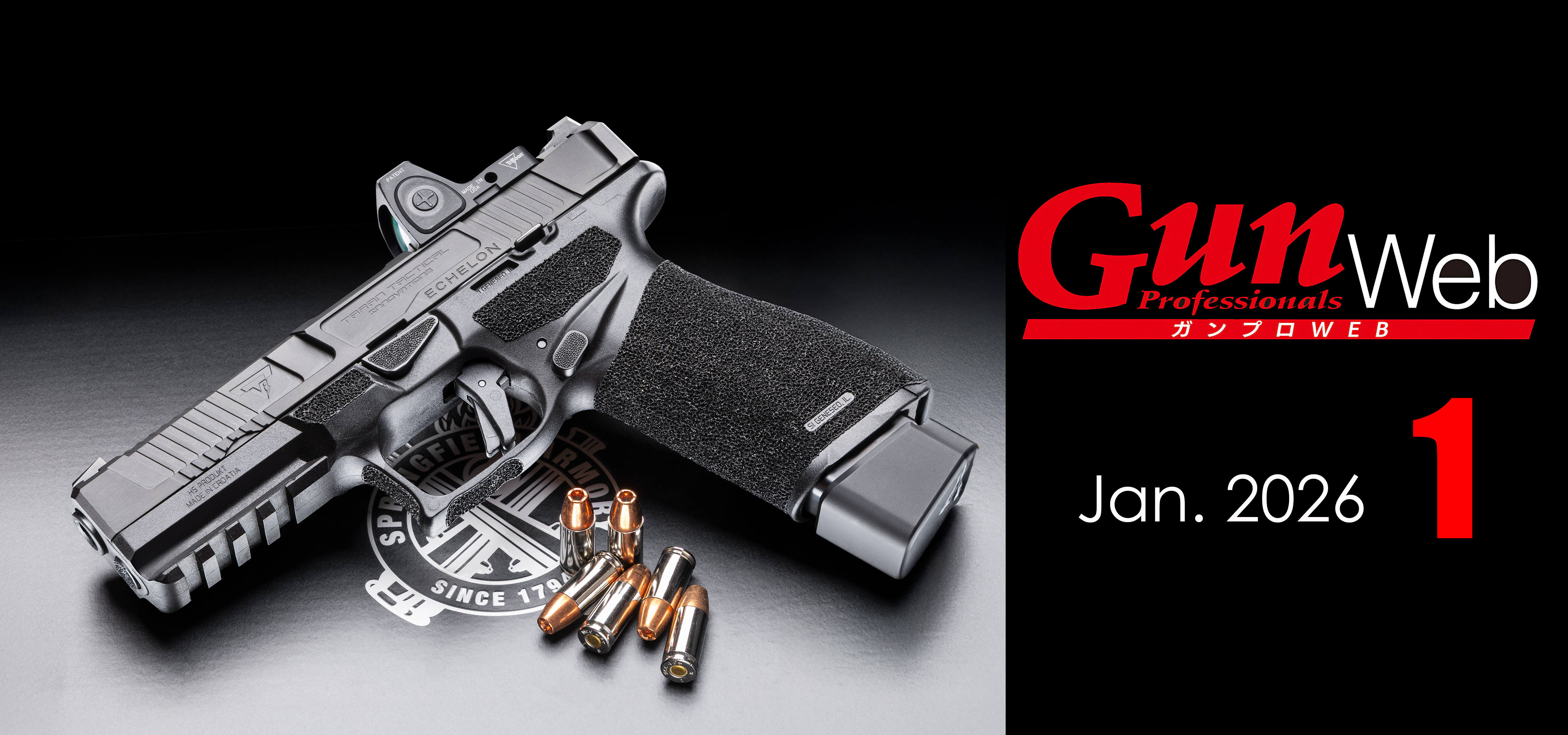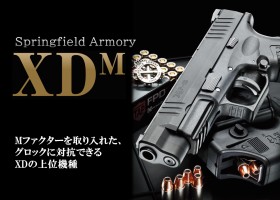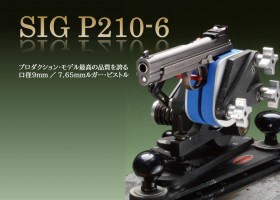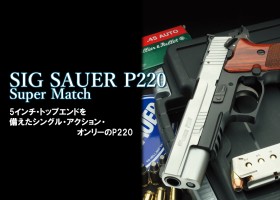2025/02/23
The Nambu Automatic Pistol: A Look at Japan's First Homegrown Semi-Auto(南部式自動拳銃大型 甲/乙 英訳版)
The Structure and operating mechanism of the Nambu Pistol
The Nambu pistol's design and operation can be summarized succinctly as a short-recoil, recoil-operated, semi-automatic pistol with a rotating, independent locking block. However, a firearms magazine can't simply stop there.
So, let's take a closer look at the Nambu pistol's mechanism, operation, and features.
The first thing to point out, as is obvious, is that the Nambu pistol has a very similar design to the Type 14 pistol, which was developed and improved based on the Nambu pistol as a prototype.

The pistol is divided into two main parts: the grip frame and the upper receiver, which extends rearward from the barrel (a "barrel extension" type). The upper receiver houses the bolt, which moves back and forth a considerable distance.
When both the upper receiver and the bolt are in the forward position, a locking lug on the underside of the rear of the bolt engages a cut in the receiver. The bolt is locked into place by this rotating locking lug, which moves up and down at its rear.
Once the bolt and receiver are locked together, the bolt cannot move rearward, even under high pressure from the front. This means the gun can be fired safely.
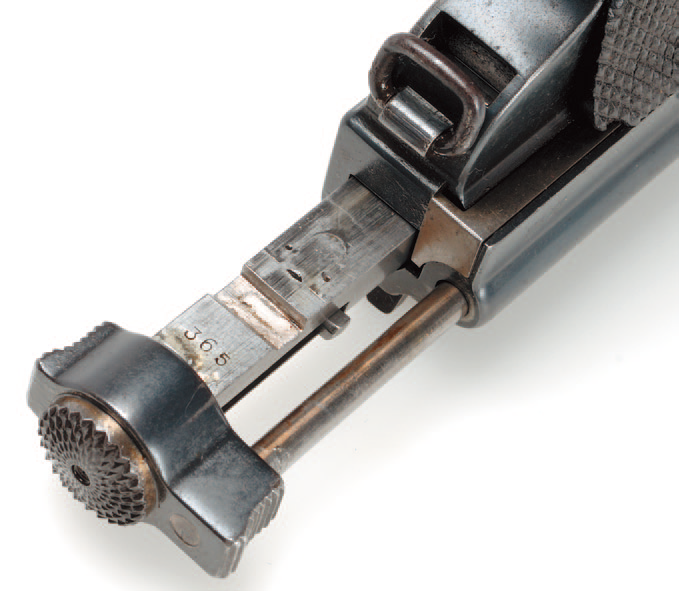
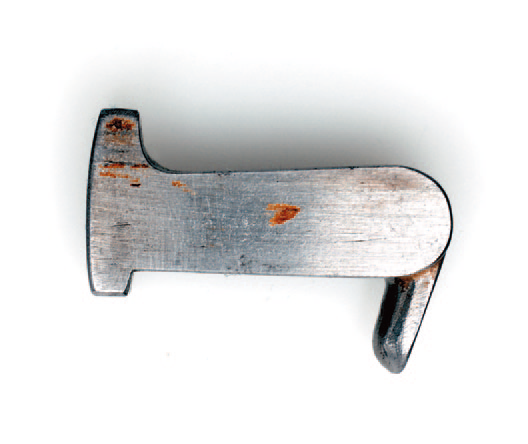
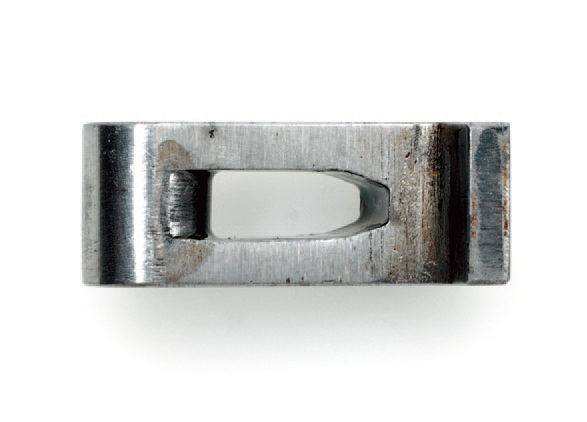
When you pull the trigger and fire the round, the gunpowder in the cartridge ignites, creating high-pressure gas that propels the bullet forward through the barrel. Even at this point, the bolt and upper receiver remain locked together, preventing the bolt from opening.
Once the bullet leaves the muzzle, the barrel, upper receiver, and bolt all recoil a short distance against the grip frame at high speed (short recoil).


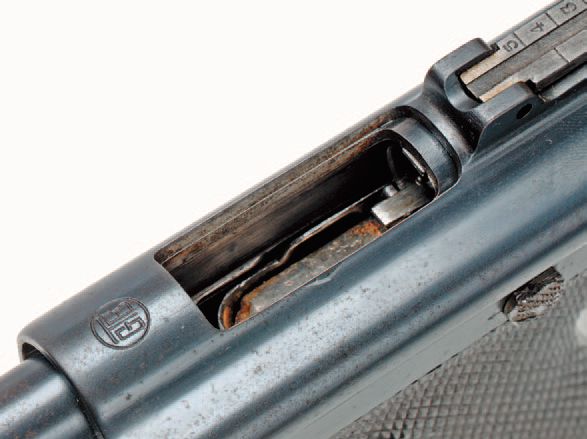
As the upper receiver recoils, the rear extension of the rotating locking lug, located on the underside of the upper receiver, aligns with an opening in the grip frame. The pressure from the spring attached to the locking lug causes it to rotate, and its rear end drops. This frees the locking lug's protrusion from the groove in the bolt, allowing the bolt to move freely. The inertia of the high-speed recoiling upper receiver and bolt is transferred to the bolt body, causing it to recoil significantly.
This action pulls the spent cartridge casing from the chamber by the extractor, located at the front of the bolt. The casing is then ejected from the ejection port just before the bolt reaches the end of its rearward travel.
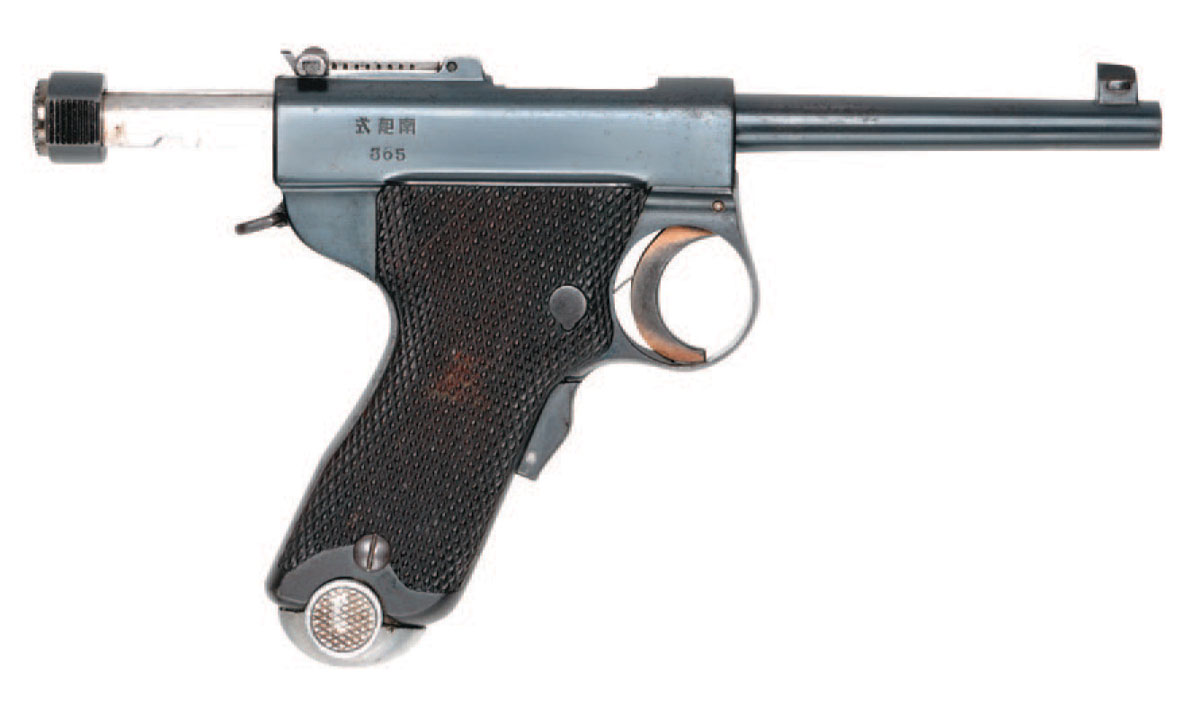
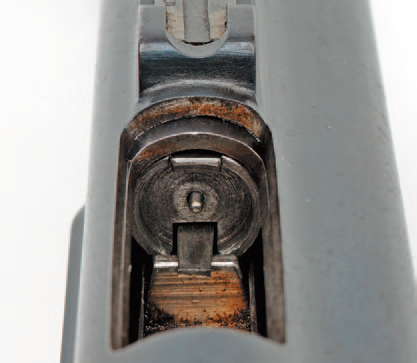
The fully recoiled bolt, under pressure from the compressed recoil spring (which runs parallel to the bolt along the left side of the upper receiver), begins to move forward.
As it moves forward, the bolt strips a round from the top of the magazine and feeds it into the chamber at the rear of the barrel. Simultaneously, the bolt hooks the firing pin on the sear at the rear of the upper receiver, holding the firing pin in the cocked position and compressing the firing pin spring.
Once the round is chambered and the bolt is fully forward, the upper receiver also moves forward a short distance. This movement causes the rear of the locking lug to rise (due to the incline within the grip frame), engaging the locking groove in the bolt and locking it in place.
When you release the trigger, the disconnector at the tip of the sear protrudes, allowing the trigger to once again interact with the sear.
Pulling the trigger at this point will fire the gun again, and the same cycle repeats.
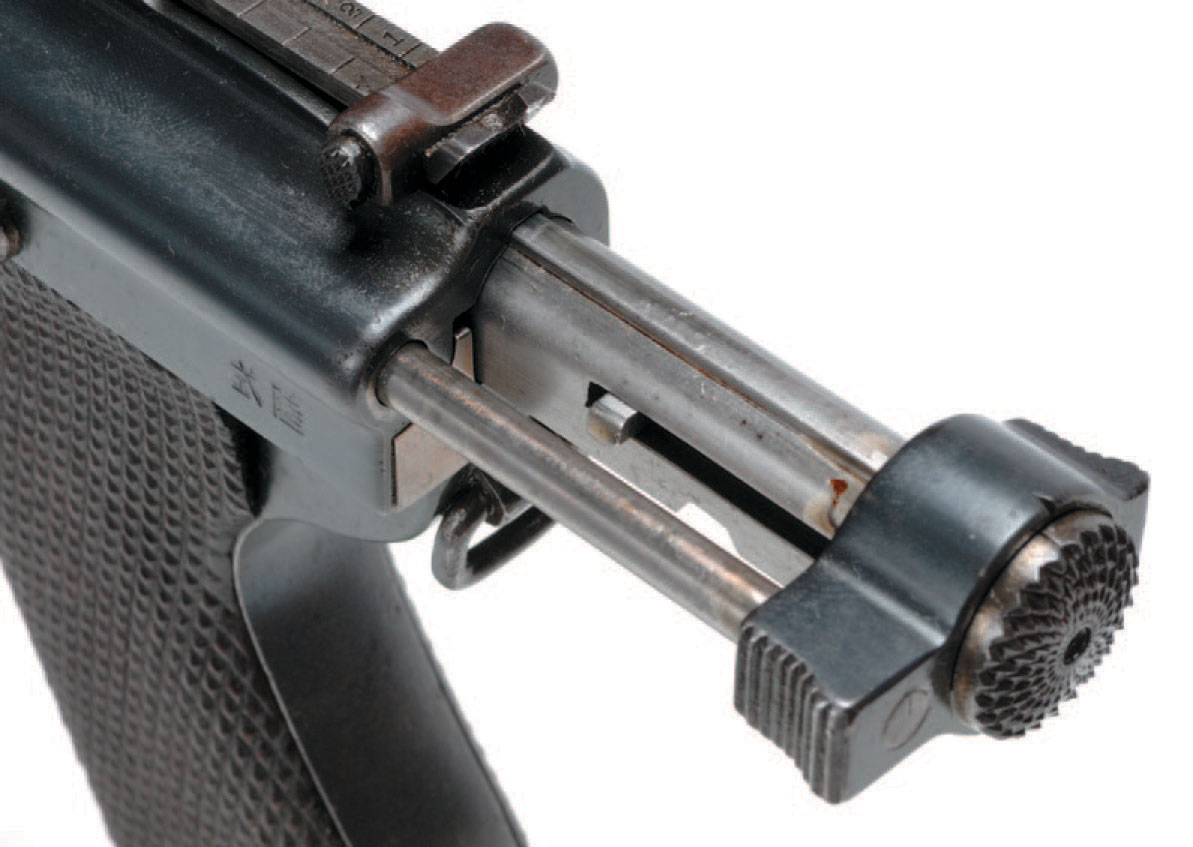
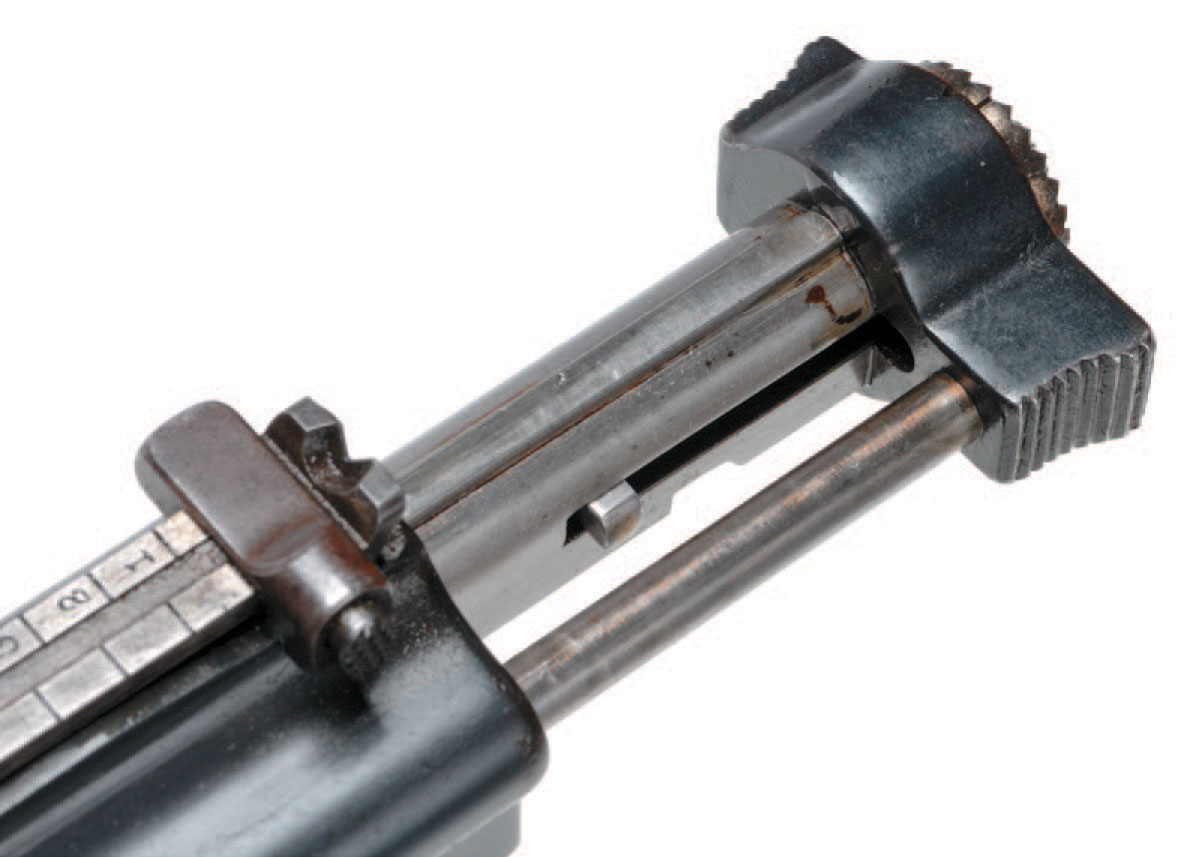
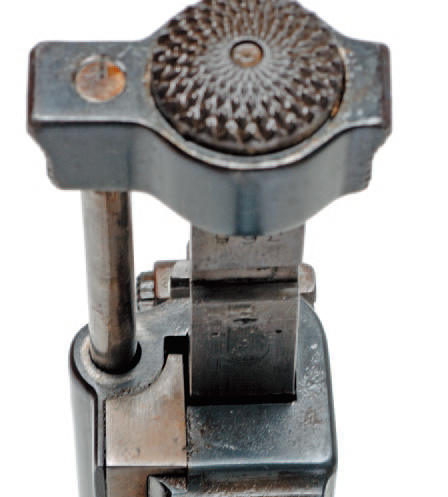
The Nambu pistol features a grip safety on the front strap of the grip.
To fire the gun, you must grip and depress this grip safety. The grip safety has a portion that protrudes into the trigger guard, and this part locks against the rear of the trigger's lower end.
The trigger is a rotating design with a pin at the top. Pulling the trigger raises the front of a long, seesaw-type sear located on the lower left side of the upper receiver, causing the rear of the sear to drop and release the firing pin.
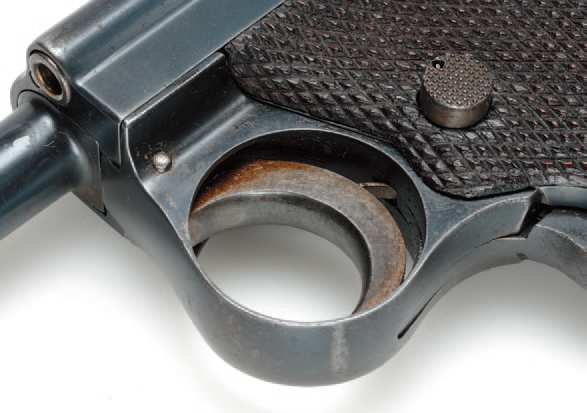
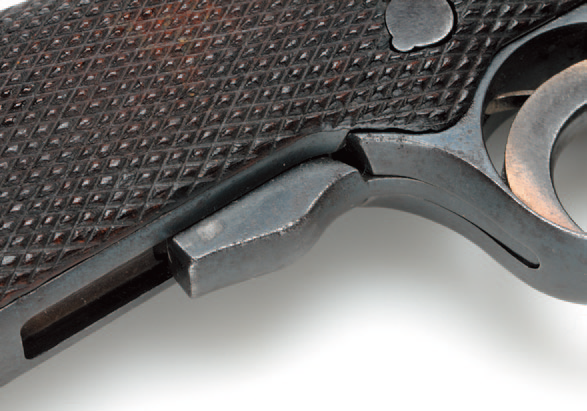
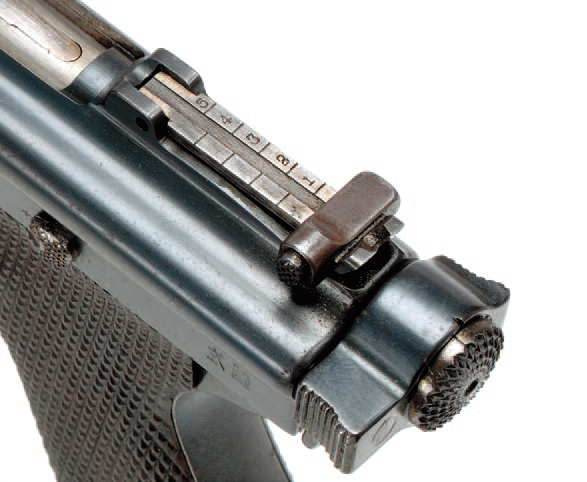
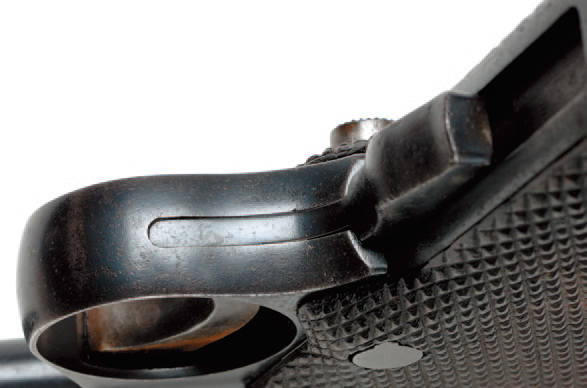
The later Type 14 pistol also uses a similar sear design. However, while the Type 14 pistol has a firing pin protrusion that extends below the bolt, the Nambu pistol's firing pin protrusion, which engages the sear, extends from the left side of the bolt, not from below.
The tip of the sear also features a disconnector, which prevents full-automatic firing by disconnecting the trigger immediately after a shot is fired. The disconnector moves back and forth and is deactivated by the short recoil.
When the upper receiver moves forward again, the disconnector is compressed against the rear of the trigger. When you release the trigger, the disconnector pops up above the trigger, allowing the trigger to engage the sear again. This disconnector design functions similarly to the one found in the German Luger (P08) pistol.
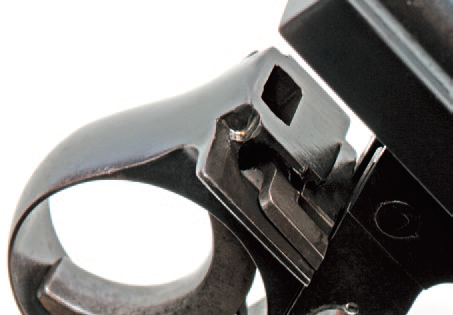
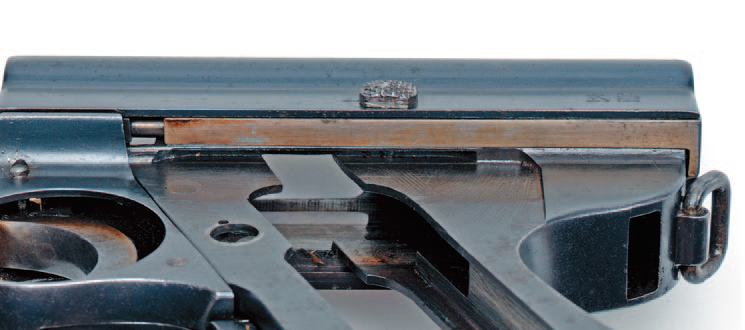

The design of the recoil spring housing on the Nambu pistol seems to have some serious flaws.
Many early developers struggled with finding space for the recoil spring in semi-automatic pistols.
Kijiro Nambu was no exception. Because he couldn't find enough space inside the receiver, he had to bulge the upper left side of the grip frame to house the recoil spring. As a result, the recoil spring's force is transferred to the rear of the bolt via an L-shaped bracket. This offset force transfer method can cause problems with the bolt's smooth operation.
For this reason, the Type 14 pistol, which was developed from the Nambu pistol, had its bolt body shaved down on both sides to accommodate a thinner recoil spring, allowing for even pressure distribution.
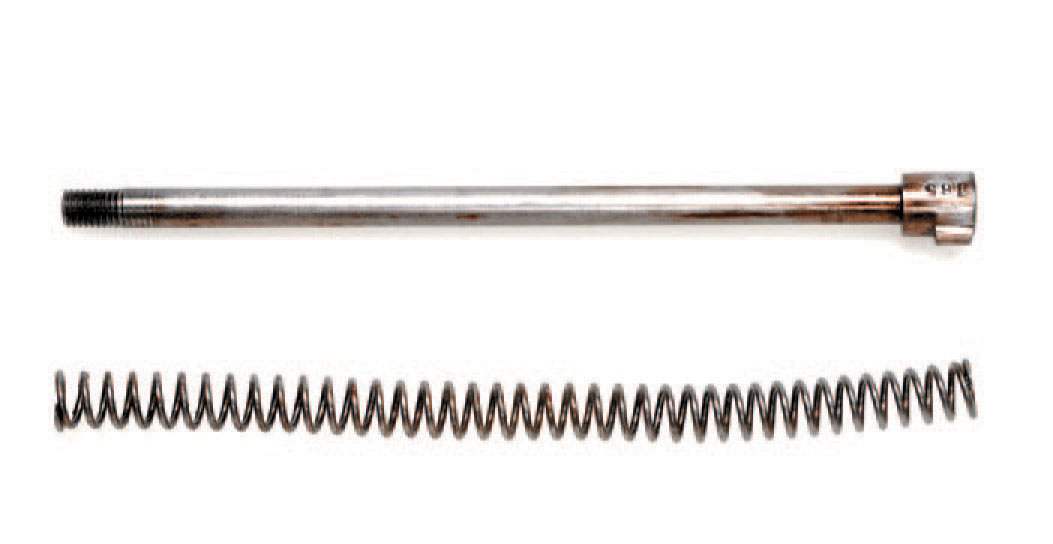

The shape of the bolt body itself is designed in a complex way that seems unnecessarily complicated, a common trait in early semi-automatic pistols. This bolt body design was also simplified in the later Type 14 pistol, basically into an easier-to-manufacture cylindrical shape.
The Nambu pistol is sometimes said to be a copy of the German Parabellum pistol (Luger). However, this is incorrect. While its outline certainly has a silhouette very similar to the Parabellum pistol, its operation is completely different. The Parabellum pistol uses a toggle-action mechanism, while the Nambu pistol uses a direct-action bolt.
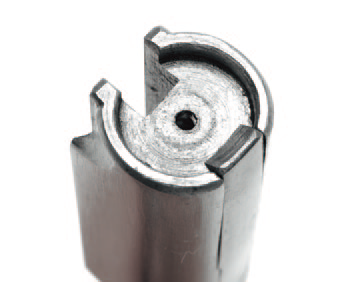


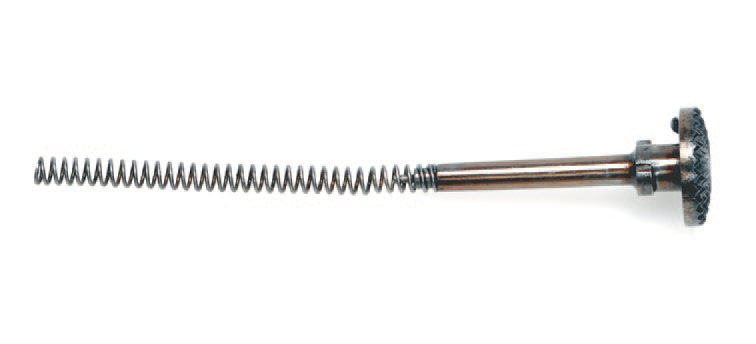
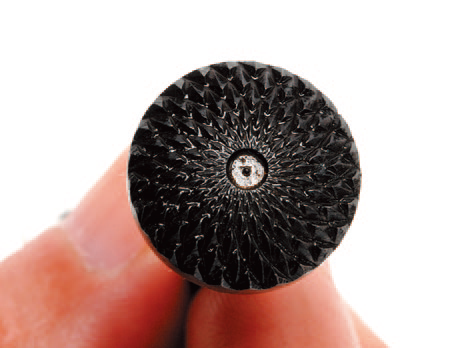
Some people point out the similarities between the Nambu pistol and the Italian Brixia (Glisenti) pistol. However, this is also a misconception. It's simply that their silhouettes and external appearances are similar.
The Italian Brixia pistol does have a component inside that resembles the Nambu pistol's rotating lock.
However, while the Nambu pistol's rotating lock is for full lockup, this part in the Brixia pistol is not a complete lock. Instead, it's just a pressure piece for delayed blowback, which alters the timing of the bolt opening. They are completely different in terms of operation.
So, was the Nambu pistol a completely original design? I don't think so.
Firearms inventors often say they were inspired by a particular firearm when designing their own. The word "inspiration" has a different connotation than simply "copying."
It often means that the inventor understood the basic principles of a product or invention and then incorporated those principles into their own design, but in a modified form. In such cases, they might say they were inspired by the original invention.
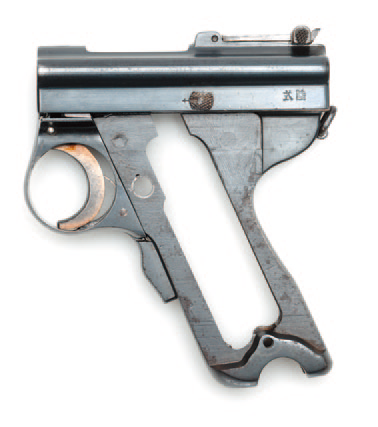
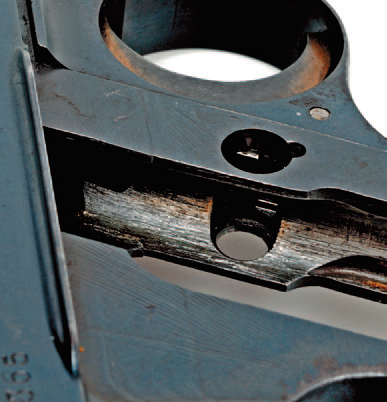
It seems to me that the Nambu pistol's locking mechanism is a prime example of Kijiro Nambu's design inspiration drawn from other works.
Despite their completely different appearances, the design and operating principles of the locking lug in the Nambu pistol are very similar to the locking system in the Mauser C96 semi-automatic pistol (Mauser Military).
It's likely that Kijiro Nambu, after seeing the Mauser C96's locking lug, was greatly inspired and completed his own locking mechanism.
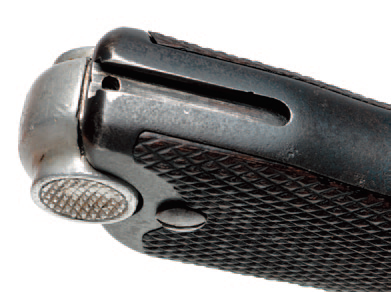
The disconnector, as mentioned earlier, is also thought to have been inspired by the Parabellum pistol.
This is nothing to be ashamed of. There are hardly any firearms inventors who have developed a firearm from scratch, with every single idea being completely original.
Many firearms developers are inspired in some way by firearms developed by others and incorporate those ideas into their own designs.
Looking at the Nambu pistol again, it certainly has the weaknesses and shortcomings common to early semi-automatic pistols. However, it's important to remember that this pistol was developed in Japan, far from the center of firearms development in Europe, only a few years after the Parabellum pistol was completed. And it was developed by a young man, just over 30 years old, relying on his own ideas. This is what we should focus on.
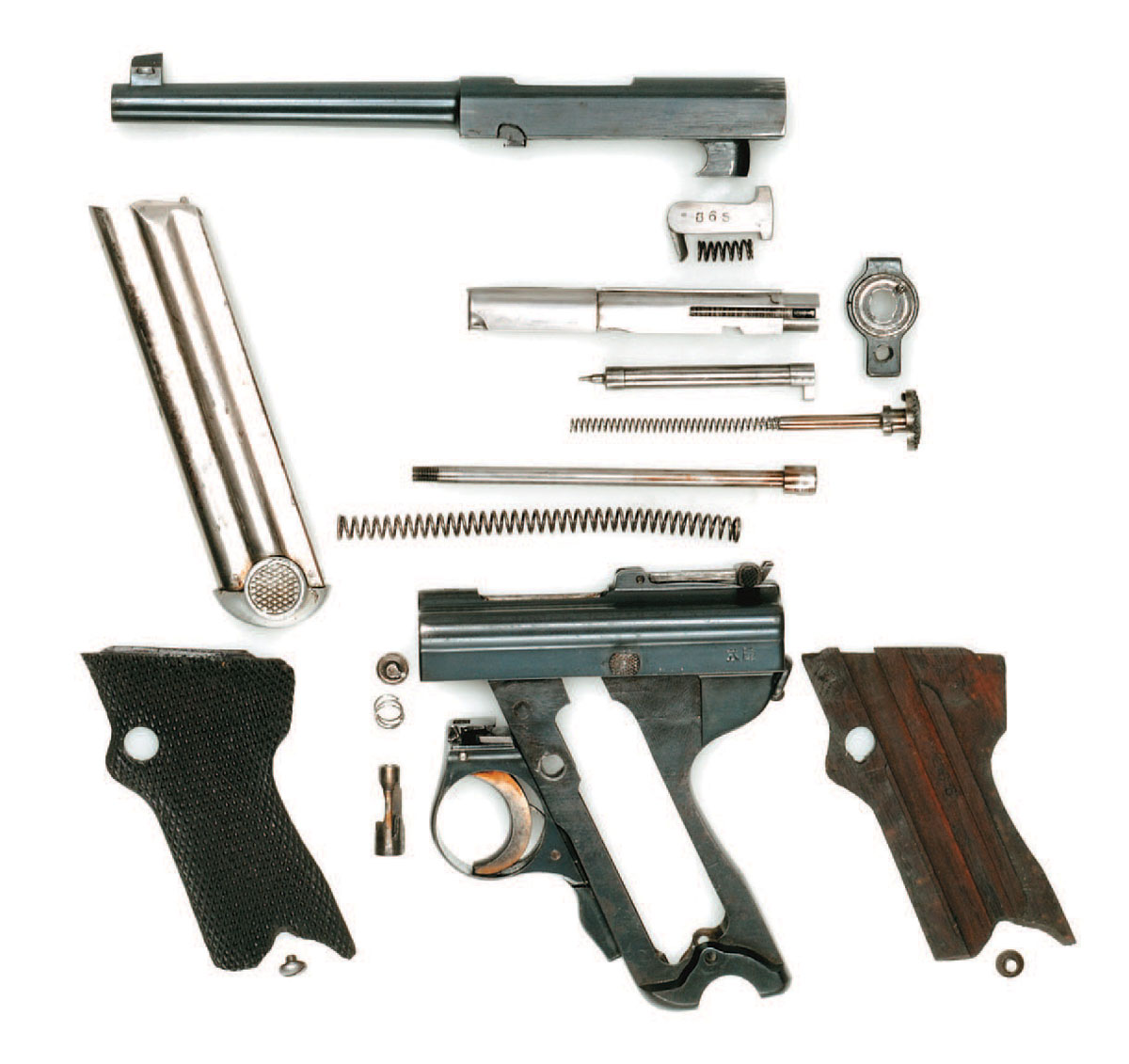
REPORT by Masami Tokoi
PHOTOS by Terushi Jimbo
Published in Gun Professionals November 2012 issue
Minor revisions by GPWeb Editor, January 2025
※ The copyright of the information, text, and images displayed on this site belongs to our company and the information providers who hold the rights. Unauthorized reproduction or duplication is a copyright infringement (infringement of reproduction rights and public transmission rights) and may be subject to legal penalties. We kindly ask you to refrain from such actions.
